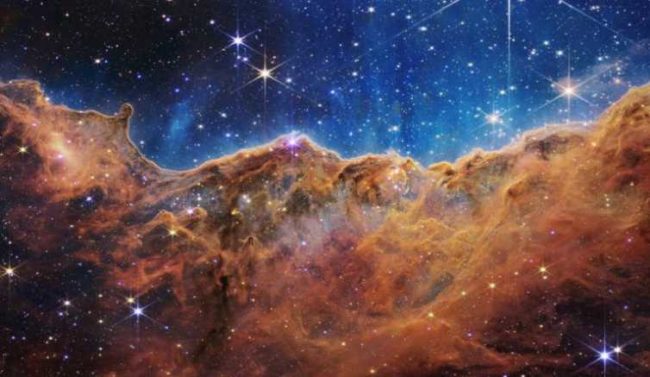
Tuesday, July 12 at at 6:30 a.m. Alaska time, NASA rolled out five images gathered in the last few weeks from the James Webb Space Telescope, the largest and most powerful space observatory ever built. The telescope, launched in December 2021 on a European Space Agency rocket, is expected to be the world’s premier observatory for at least the next decade, serving thousands of astronomers and other scientists across the globe.
The GI’s Gunther Kletetschka was involved with final development of the magnetically controlled microshutters on the telescope beginning in 2003.
“We found out that the magnetic arm is magnetically too strong and at the parking position of the arm, the magnetic field is so strong that some microshutters, close to the magnetic parking position, were partially open” when they should have been closed, Kletetschka said. “I redesigned the magnet into the quadrupole magnet arm. The field near this magnet was the same strength but decayed much faster with the distance. So when the magnetic quadrupole magnet arm was in the parking position, the microshutters were closed.”
“I am so excited to see my (magnetic) arm working on JWST and feel very special that I could help this project,” Kletetschka said. “There were many other people working hard on JWST. I am very happy that the JWST is producing these marvelous images that will solve many mysteries to come.”
This morning’s live program, broadcast from NASA Goddard and other sites around the world, showcased images of the Carina Nebula, Stephan’s Quintet, Southern Ring Nebula, hot gas exoplanet WASP 96 b and galaxy cluster SMACS 073. The entire hour-long program is available for viewing on YouTube. Homepage for the John Webb Space Telescope is webb.nasa.gov.
Source: Geophysical institute
